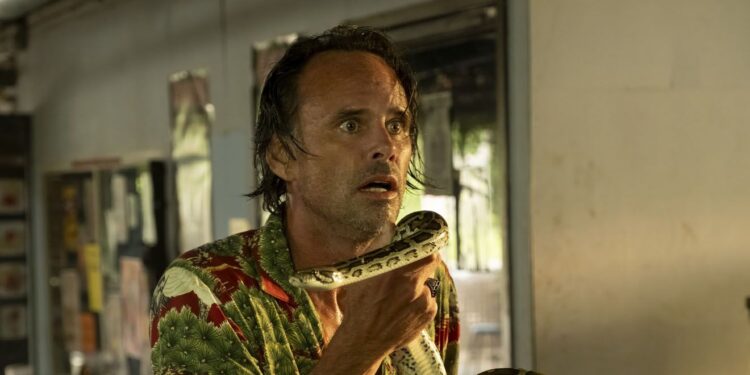Introduction
Season 3 of The White Lotus has captivated audiences with its vivid storytelling and complex characters. While the themes of monkeys, incest, and female friendships have been evident, a subtler element woven throughout is snake symbolism. This article explores the significant role of snake imagery and its impact on key characters in the series.
The Golden Snake Necklace
The story begins with Chelsea admiring a golden snake necklace in the hotel’s gift shop in episode two. This seemingly innocuous moment is laden with symbolism, highlighting Chelsea’s fascination with danger and forbidden elements. The robbery that follows, executed by hotel employee Valentin and his accomplices, including Alexei with his prominent snake tattoo, ties the snake imagery to themes of deceit and hidden danger.
Rick and the Caged Snakes
Rick’s interaction with snakes reaches a pivotal moment in episode three when he releases several snakes from a snake farm. His actions are depicted as reflective of his inner turmoil and identify with the snakes’ captivity. Rick’s sense of entrapment mirrors the snakes’ condition, emphasizing his portrayal as a misunderstood villain, a recurring theme in mythologies where snakes are traditionally seen as antagonists.
Inner Struggles and Misunderstandings
Rick expresses this conflict when he says, “Even evil things shouldn’t get treated like sh-t.” This indicates his belief that maltreatment and misunderstanding contribute to further evil rather than causing it. The symbolism here suggests that Rick perceives his life’s hardships as products of societal misjudgment rather than inherent evildoing.
Chelsea’s Brush with Death
In a dramatic twist, Chelsea’s interest in the snake necklace foreshadows her near-fatal encounter with a cobra. When she is bitten, the show highlights the duality of her character’s choices—curiosity leading to confrontation with mortality. Her reaction emphasizes a belief in inherent evil, starkly contrasting Rick’s more nuanced view of morality.
Character Perspectives
The actors’ portrayals add depth to these symbolic representations. Walton Goggins, who plays Rick, believes his character is burdened with a life shaped by forces beyond his control. Meanwhile, Aimee Lou Wood, portraying Chelsea, expresses the duality of intrigue and caution her character exhibits. This complexity reflects Chelsea’s reluctance to stray from her chosen mission despite its inherent dangers.
Conclusion
The snake symbolism in Season 3 of The White Lotus adds rich layers to the narrative, serving as a metaphor for personal struggles, societal perceptions, and the duality of human nature. As this season draws to a close, viewers are left to ponder the implications of these elements and how they shape the characters’ journeys.

























